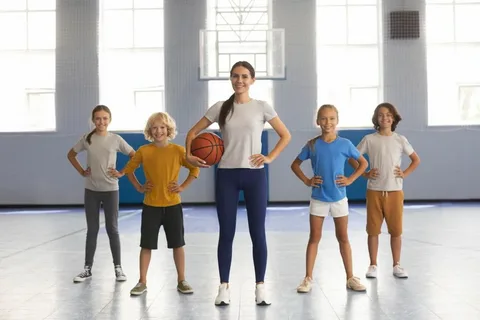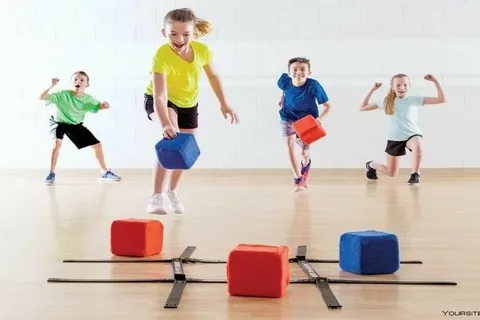How Does Dance Fitness Involve Physical Education?
Outline
- Introduction
- Understanding the importance of physical fitness and dance
- The reason this topic is important
- What is dance fitness?
- Definition
- Different types of dance fitness
- Benefits of fitness through dance
- The Connection Between Dance Fitness and Physical Education
- Physical education is an important aspect of schools
- How dance fitness is integrated into the school curriculum
- The importance of fitness and movement
- Benefits of incorporating Dance Fitness into Physical Education
- Physical benefits
- Benefits to the mind and soul
- Social benefits
- Real-life Examples of Dance Fitness in Physical Education
- School case studies
- Personal stories
- Challenges and Solutions
- Common issues in teaching dance fitness
- Strategies to conquer these obstacles
- Frequently Asked Questions (FAQs)
- Which age groups could benefit from dancing?
- Do you have to be a professional dancer in order to be a part of the group?
- What is the accurate time to have dance classes taught in the physical education curriculum?
- Conclusion
- The importance of fitness and dance in physical education
- The program encourages dancers to take a look at their fitness
Introduction
What is dance fitness? include the subject of physical education?
This is a fantastic idea and is very pertinent for anyone who is interested in how to remain active and have fun.
When we think of the subject of physical education (PE), typically the first images that pop into our heads are doing laps or push-ups. Dance fitness, however, brings an entirely new energy to the world of PE.
It’s more than simply moving your feet.
It’s a method to get fit and have fun while doing it!
In this article, we’ll look into the way that dance fitness has become an essential component of physical education. We’ll look at its advantages as well as how it can improve classes in PE and the reasons you may want to take part.
What is dance fitness?

Definition
Fitness for dance is about having fun as you burn calories.
It mixes dance moves and fitness routines.
Think Zumba, hip-hop dance or belly dancing.
Each one of these styles will get your heart pumping as well as your body moving.
Types of Dance Fitness
Here are some of the most common types of dance fitness that you could come across:
- Zumba Zumba is a vigorous dance workout with Latin rhythms. It’s simple to follow and enjoyable!
- Hip-Hop dance The hip-hop dance exercises are lively and energetic, which makes them fun for everyone of all ages.
- Ballet Fitness: It combines ballet’s classic moves with fitness-related elements, assisting to raise the flexibility and strength.
- Dancing Cardio is a mix of aerobics and dance typically performed to the most popular pop songs, making it lively and entertaining.
Benefits of Dance Fitness
The practice of dancing has a variety of advantages, including:
- Burns Calories: It’s a great way to shed weight without being an effort.
- Increases flexibility Dance movements aid in improving flexibility, which is beneficial for general fitness.
- Boosts mood The beat and music can lift your mood, ease anxiety, and make you feel good.
The Connection Between Dance Fitness and Physical Education
Role of Physical Education in Schools
Physical education is an essential aspect of schools.
It helps kids understand health and fitness, as well as the necessity of being active.
PE classes educate students on fitness, health, and collaboration.
What is the perfect way to integrate Dance Fitness Fits into the curriculum?
Incorporating dance classes into classes in PE is a great method to keep kids engaged.
Instead of traditional sports, dance fitness is a popular choice for those who aren’t interested in sports that are competitive.
Dance fitness can be a fun way to express yourself while improving physical fitness.
Importance of Movement and Fitness
It is important to move for people of all ages.
Dance fitness can be a fun method to encourage physical fitness while also teaching rhythm, coordination, and collaboration.
It’s clear that staying healthy is more enjoyable than a boring job.
Benefits of incorporating dance Fitness to Physical Education

Physical Benefits
- Better Cardiovascular Health The benefits of dancing are good to your cardiovascular health. The higher heart rate you experience while dancing can help increase the cardiovascular fitness of your entire.
- Improved Coordination dance requires precision and timing, enhancing overall coordination. This is vital in all sports and physical actions.
- Greater Strength Different dance styles can increase the strength of various muscles.
- The Management of Weight Regular exercise helps to maintain an ideal weight.
Mental and Emotional Benefits
- Stress Relief The act of dancing reduces stress and anxiety. Physical movement releases endorphins, which raise mood.
- Greater Confidence Learning dance moves will boost confidence in yourself. Students are satisfied with their achievements.
- Creativity Dance is a way to express yourself and your creativity. Students can express their feelings through dance.
- mindfulness and discipline The art of choreography requires concentration, which could improve discipline in other aspects of daily life.
Social Benefits
- Teamwork Dance classes typically require collaboration and coordination. This helps develop social abilities.
- Communities Building Group classes help to create an atmosphere of belonging. Students become friends and encourage one another.
- Cultural awareness Dance styles of different types allow students to experience different cultural backgrounds. This encourages respect and appreciation for diversity.
- Motivation Dancing in a group creates atmosphere that is fun and encourages students to keep active.
Real-life Examples of Dance Fitness in Physical Education
Study Case Studies from Schools
Many schools are incorporating dance classes into their PE classes.
For example, the local high school has introduced Zumba classes that replaced traditional aerobics classes.
This changed and attracted students who previously dreaded PE. They became eager to go to class.
Here are some instances of schools that have successfully incorporated dance into their curriculums:
- elementary schools Certain elementary schools offer dance programs that are focused on having fun and moving and allow kids to perform their own dancing.
- High school dance fitness classes are usually included in the elective programs. Students are able to pick classes that appeal to them, like jazz or hip-hop.
- after-school programs Schools often offer dance classes after school which are accessible for students looking to increase their exercise.
Personal Stories
I can remember going to an exercise class for dance with my friends.
We danced, laughed, and afterwards, we felt fantastic.
It wasn’t simply a workout; it was an adventure!
Dance fitness is exactly what it can do; it transforms your workout into an enjoyable experience.
Many have shared similar stories of how dance training has changed their outlook on physical exercise.
It’s more than working out and having fun. It’s about enjoying the moving.
Challenges and Solutions

Common Challenges in Teaching Dance Fitness
- Insufficient Space The fact is that not every school has a dance class.
- Refusal from Students Some students might feel uneasy or insecure.
- Instructional Training for Instructors There are a few PE instructors who are educated on dance conditioning.
- Equipment Certain dance fitness styles might require specialized equipment or even attire.
Tips to Overcome These Challenges
- Make use of outdoor Spaces In the event that your gym becomes packed, you can take your class outside. Fresh air can improve the enjoyment.
- Create a warm Environment • Encourage students to be supportive of each other. A welcoming environment can boost confidence.
- Offer Training Provide skillful training for teachers who are interested in dancing fitness.
- Be flexible with your style Choose styles that do not require special equipment or large areas.
- Start with simple moves Start with simple-to-follow routines that make students feel at ease and increase their confidence.
Frequently Asked Questions (FAQs)
What age groups benefit from fitness through dance?
Fitness through dance is appropriate for everyone!
From toddlers to senior citizens, everyone is able to take part in the party.
It’s flexible and sufficient for all skills and levels of ability.
Do you have to be a dancer in order to take part?
Absolutely no!
Fitness for all ages is a must.
You can participate according to your pace and take pleasure in the music and dancing.
When should dancing fitness classes be taught in the physical education curriculum?
Ideally, dancing should be considered at least once per week.
This keeps things interesting and fresh for students and also helps them develop knowledge over time.
Does dance training help social talent?
Yes!
Dance classes encourage cooperation and collaboration.
Students usually work in groups or pairs, which helps them make friends.
What happens if students are embarrassed to dance?
It’s a problem that is common.
Encouragement from teachers and other peers can be helpful.
Focusing on enjoyment rather than performance can help ease the embarrassment.
Conclusion
The question is, how does dance fitness incorporate physical education?
The goal is to create a vibrant, stimulating, enjoyable, and stimulating environment where students can improve and grow.
Dance fitness can bring joy and movement to PE, which makes it an excellent supplement to the program.
You may be a student, teacher, or parent. Think about the advantages of incorporating dance into your physical education.
It’s a great method of promoting well-being and happiness!
In short, dance fitness is much more than a simple exercise.
It improves the educational experience, improves physical fitness, and develops social abilities.
If you’re considering doing dance fitness or adding it to your class, do it!
Now, get out there for a shake!
By following this guide, you’re now able to comprehend how dance training can help improve physical education.
Have you tried dancing fitness? What were your experiences?
Let’s continue the conversation and encourage each other!




